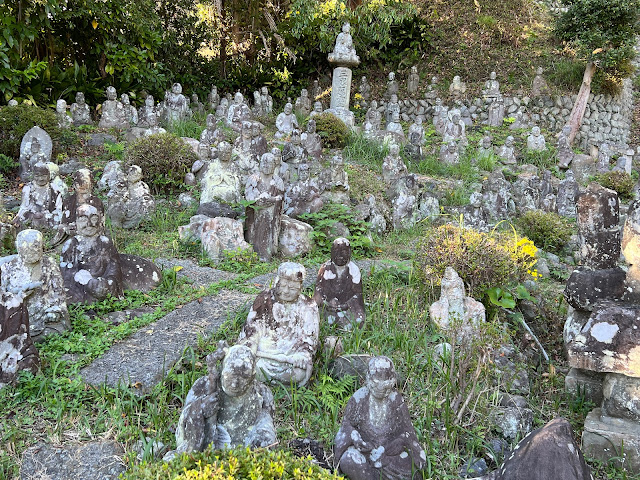Although a rest day, I was keen to make up the missing kilometres from yesterday, so after doing the laundry and catching up on admin, I took the train back to Okitsu and headed for Shimizu. Part of my reason for doing this was to give myself enough time to have a proper look around Okitsu, the setting for Oliver Statler’s Japanese Inn. This story of a Tokaido roadside inn through the centuries was written by a member of the US occupation force after the Second World War, and has become a classic. I read it a couple of months before coming to Japan.
Unfortunately, the inn itself is no more, but on the site and borrowing the name is the Minaguchi-ya gallery, offering free admission and guided tours. It houses objects related to the former inn, including calligraphy scrolls created by distinguished visitors and tableware used by the Emperor and Empress on a visit in (I think) the 1950s.
The woman who greeted me at the front door (above) and asked me to sign the visitors’ book also acted as my guide. Some of the items on display had English labels. I couldn’t understand much of what Jindo-san was saying, but kept saying “kirei” (beautiful) and “omoshiroi” (interesting), and she kept saying “arigato”, so it all went pretty well.
The other site I wanted to visit in Okitsu is the Seiken-ji Temple, which also features prominently in Japanese Inn. Set on the hillside above the road and rail tracks, this beautiful old Buddhist temple is famous in Japanese history as the place where Tokugawa Ieyasu, the first Shogun, was educated.
Then it was back onto the road, and a fairly nondescript few kilometres to the next railway station at Shimizu. Easy walking, but into the teeth of a strong and chilly westerly breeze, which added to the effort.
Back to the hotel, and getting organised for the first day of the next section of the trek.



Comments
Post a Comment